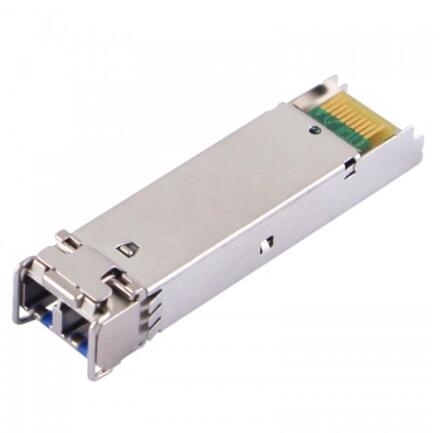- Related articles
- All Cisco GLC-FE-100BX-U's information (List price, Specs, Datasheet PDF, Compatibility ma
- The difference between DWDM and WDM
- Optical Transceivers for Cisco WS-C3750G-48PS-E Switch
- Optical Transceivers for Cisco SF302-08MPP-K9-EU Switch
- What is SFP Connector?
- The Difference between Dedicated and Integrated Network Card
- All Cisco ONS-SC-GE-LX's information (List price, Specs, Datasheet PDF, Compatibility matr
- Optical Transceivers for Cisco N3K-C3172PQ-10GE= Switch
- Optical Transceivers for Cisco WS-C3650-48TS-L Switch
- Optical Transceivers for Cisco WS-C2960XR-24PS-I Switch

GBIC (gigabit interface converter) is a transceiver that converts between electrical and optical signals for high-speed networking.
Function
A GBIC module acts as a transceiver that turns electric currents into optical signals, before changing those optical signals into digital electric currents, as stated by searchcio-midmarket.com. The process was created to simplify switch and hub design. Each GBIC module is in place for making system administration of electro-optical communication networks easier. These modules plug directly into a system. They were first designed to support Fibre Channel data networks but are also used with Gigabit Ethernet setups. This device made it possible for users to avoid buying fully populated switching equipment.
Transfer Speed
Data transfer rates vary on GBIC module model specifications, but they have a minimum of 1 gigabit per second. Manufacturers, such as Cisco, make GBIC modules with varying transfer speeds.
Uses
A GBIC module allows a user to reconfigure fiber links, configure tailor receiver costs, link networking distances and organize network topologies based on set requirements. Used on a fiber optic or an Ethernet system, GBIC modules can be upgraded, swapped out or plugged in without turning off the computer. This flexibility eliminates the need to replace entire system networking boards.
GBIC Product Numbers:
WS-G5484, WS-G5486, WS-G5487, CWDM-GBIC-1470=, CWDM-GBIC-1490=, CWDM-GBIC-1510=, CWDM-GBIC-1530=, CWDM-GBIC-1550=, CWDM-GBIC-1570=, CWDM-GBIC-1590=, CWDM-GBIC-1610=
SFP Product Numbers:
SFP-GE-F=, SFP-GE-S=, SFP-GE-L=, SFP-GE-Z=, GLC-SX-MM=, GLC-LH-SM=, GLC-ZX-SM=, GLC-T=, CWDM-SFP-1470=, CWDM-SFP-1490=, CWDM-SFP-1510=, CWDM-SFP-1530=, CWDM-SFP-1550=, CWDM-SFP-1570=, CWDM-SFP-1590=, CWDM-SFP-1610=.
SFP Module
With the development of telecommunication, most of GBIC is replaced by SFP. The small form-factor pluggable (SFP) is a compact, hot-pluggable transceiver used for both telecommunication and data communications applications. The form factor and electrical interface are specified by a multi-source agreement (MSA) under the auspices of the SFF Committee. It interfaces a network device motherboard (for a switch, router, media converter or similar device) to a fiber optic or copper networking cable. It is a popular industry format jointly developed and supported by many network component vendors. SFP transceivers are designed to support SONET, gigabit Ethernet, Fibre Channel, and other communications standards. Due to its smaller size, SFP obsolesces the formerly ubiquitous gigabit interface converter (GBIC); the SFP is sometimes referred to as a Mini-GBIC. In fact, no device with this name has ever been defined in the MSAs.






















































